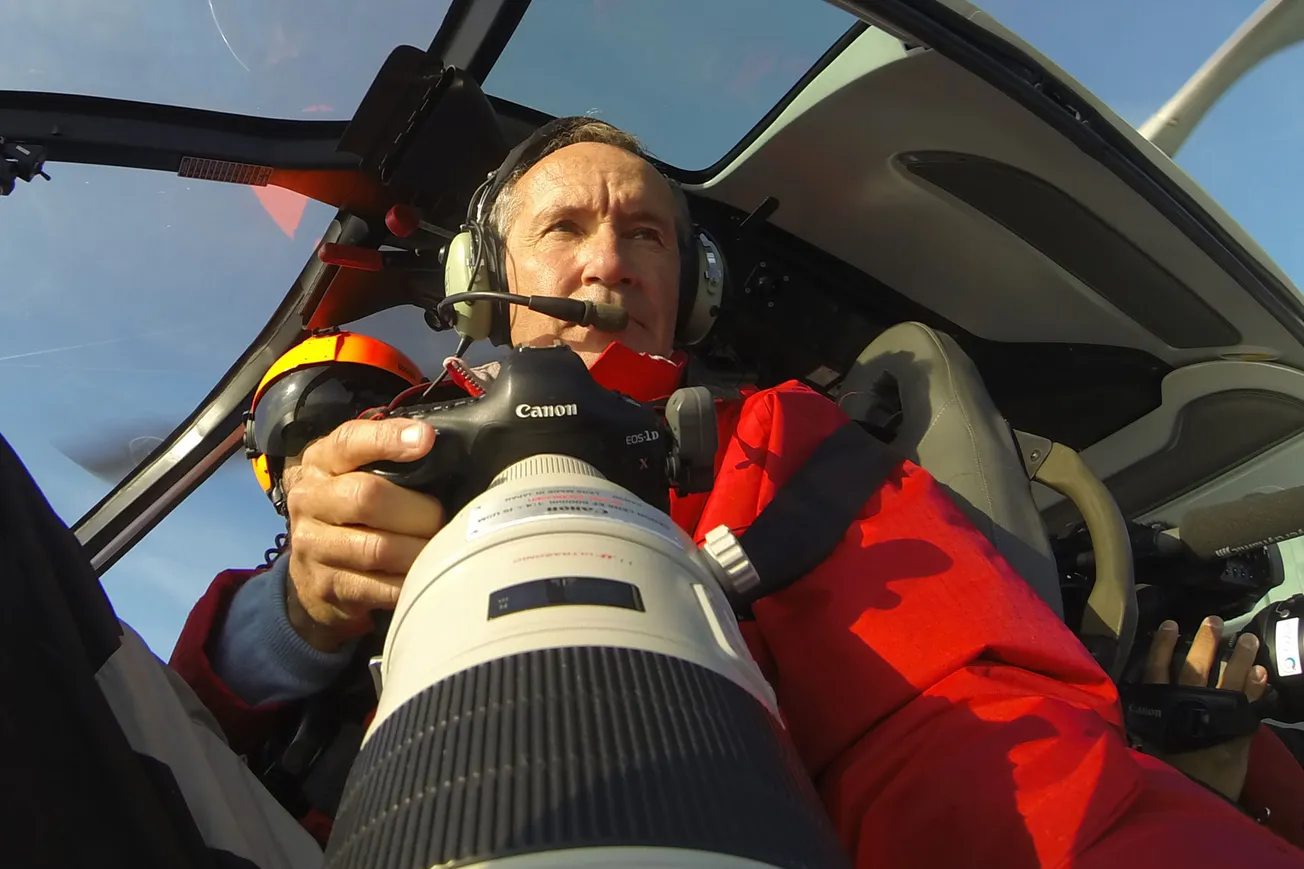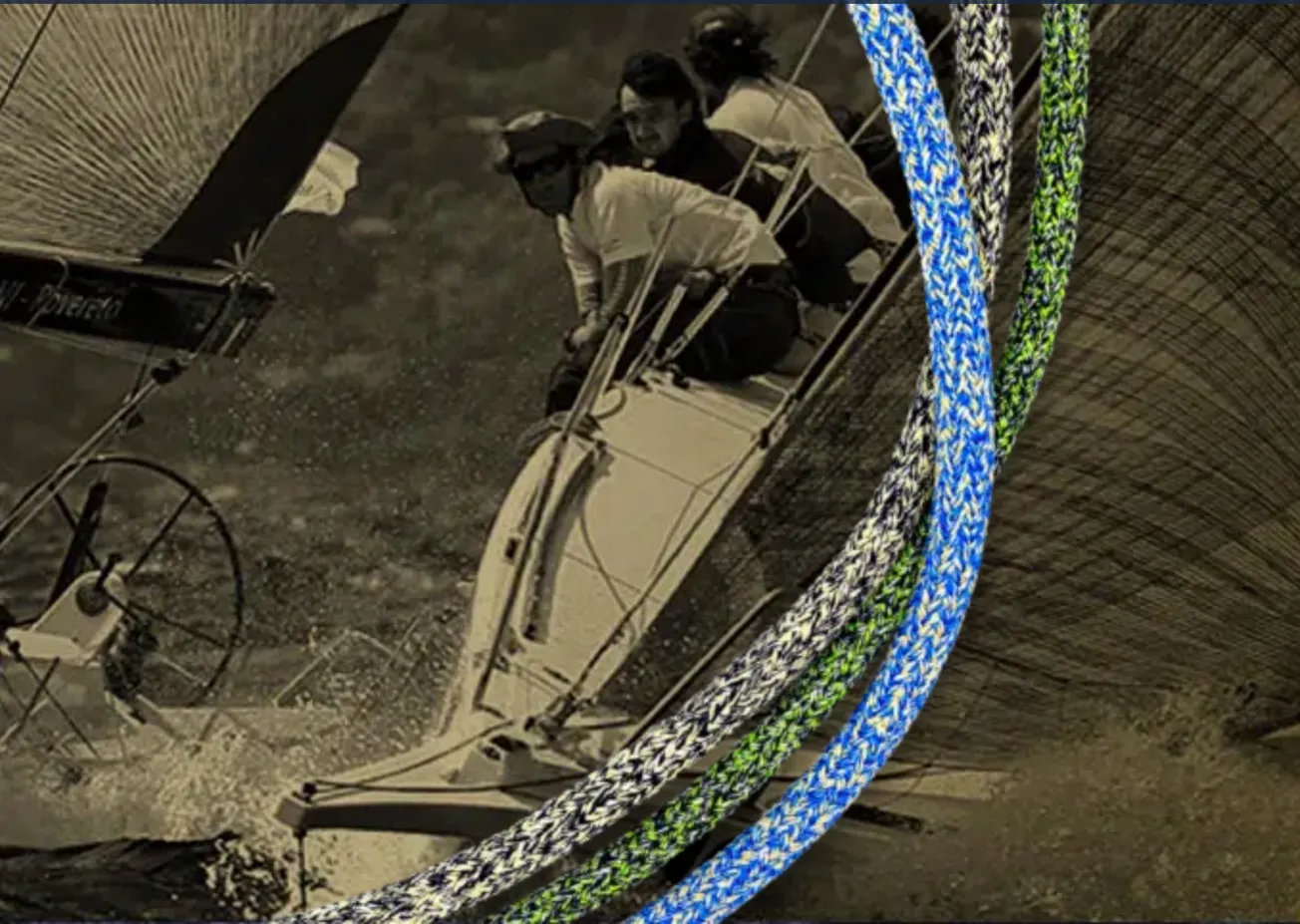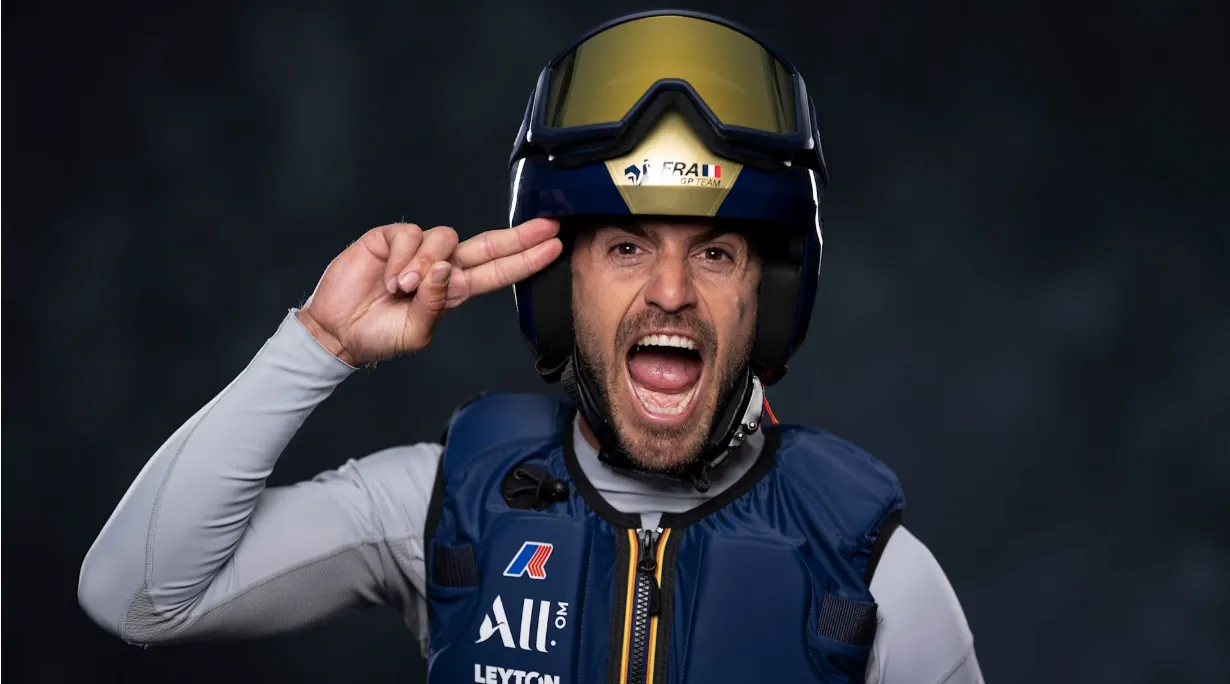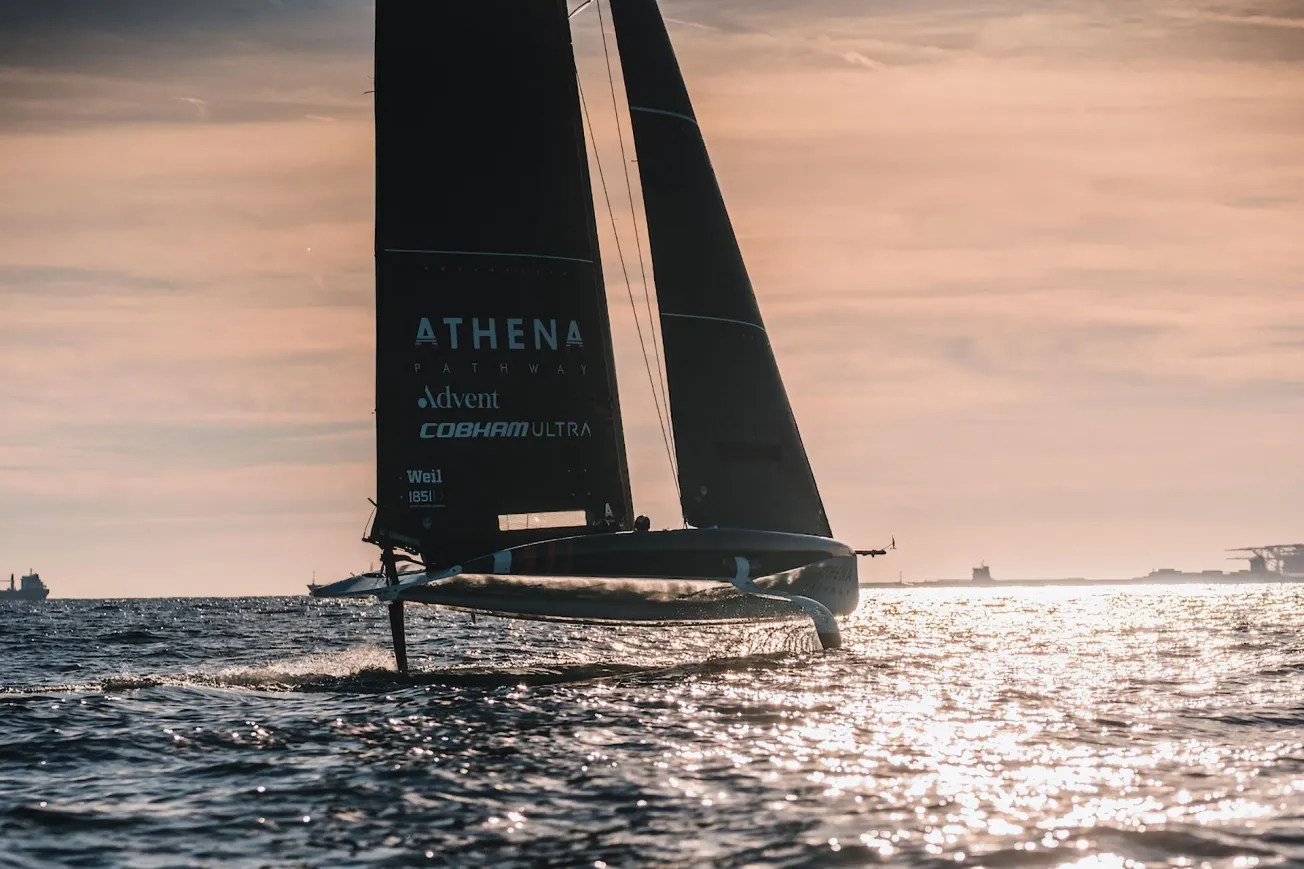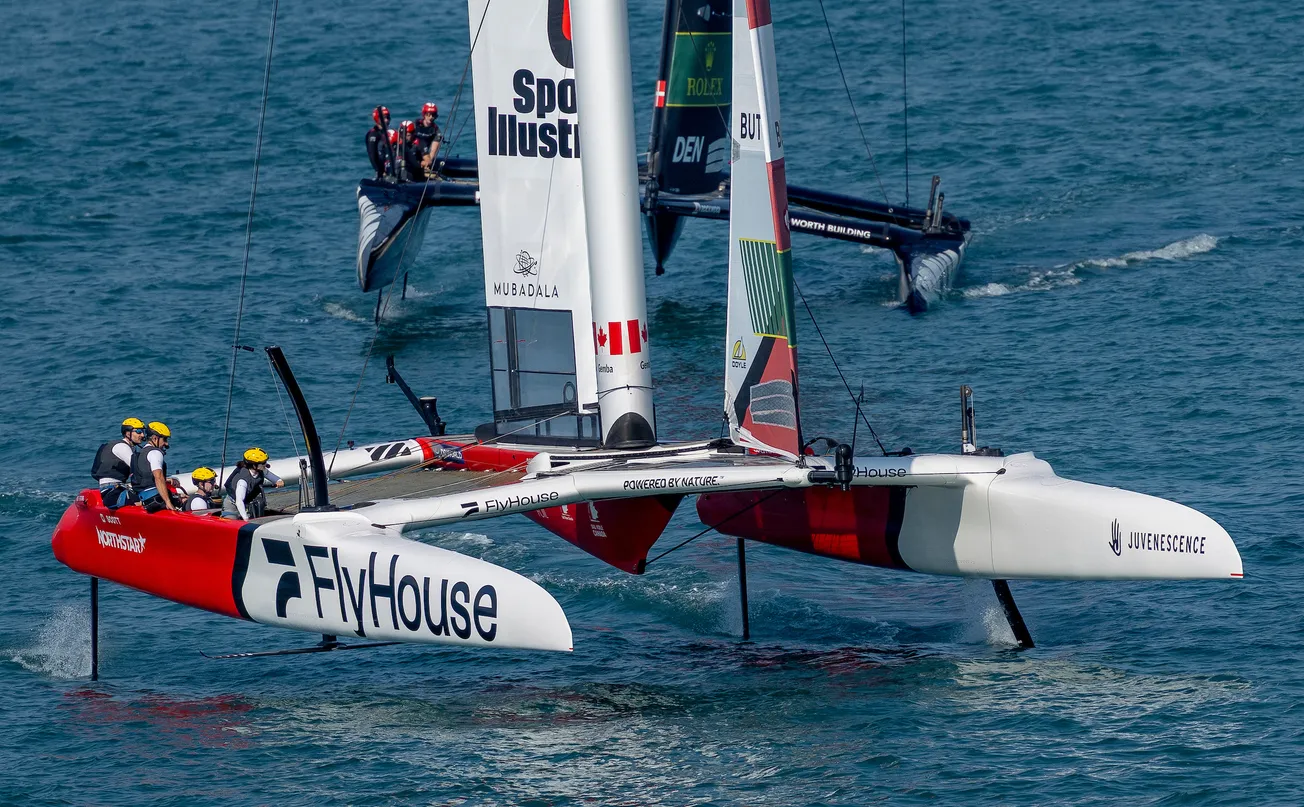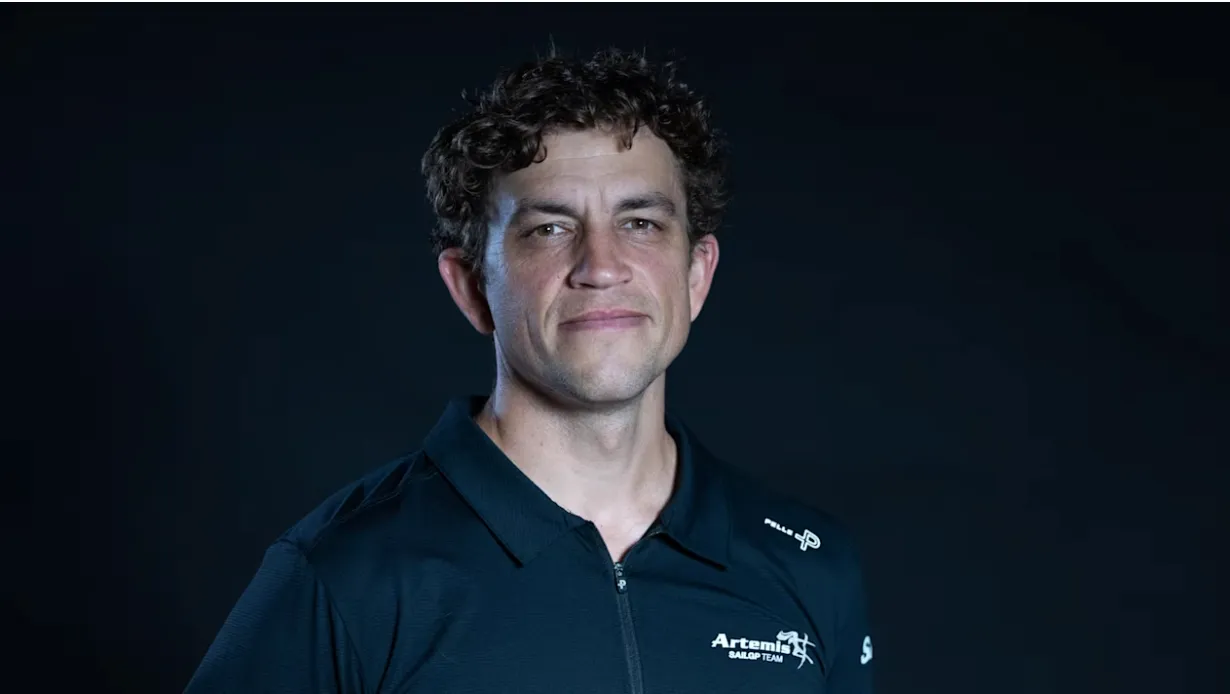Originally from Arles in the south of France Gilles now lives in Marseille where he has worked for over 40 years as a marine photographer. What some may not know is that he was for many years an active professional racer, first in the Mediterranean and then in major international events – including an America's Cup campaign in 1983 aboard France III.
He first started covering the regattas in which he participated as a journalist for various specialist magazines, including Voiles et Voiliers, his go-to magazine. He became a full-time professional photographer in 1986, he has since been providing images to the world’s major publications.
He has authored – individually or collectively – numerous books on racing and boats and has worked as the official photographer for several major sailing events and professional racing teams and sponsors. He also produces advertising visuals for the biggest names in the nautical industry, such as Wally Yacht and the Bénéteau group.
One of Gilles’ true passions is the America's Cup where he is one of the very few photographers to have covered the last 13 editions. He was the official photographer for Oracle Racing for 11 years, notably at the time of the giant trimaran USA 17. At AC34 in San Francisco in 2013 he managed the photo production of the event.
In recent years he has added video production and drone piloting to his skill set and continues to work for his many international clients (including Louis Vuitton during the 38th America’s Cup in Barcelona) and is well known for his spectacular images of the Voiles de Saint-Tropez, for which he has been the official photographer for many years.
Fuji at Ushant
May 27, 2002. French solo skipper Loïck Peyron passing Ushant Island aboard the ORMA 60 trimaran Fujifilm during the Course des Phares race.
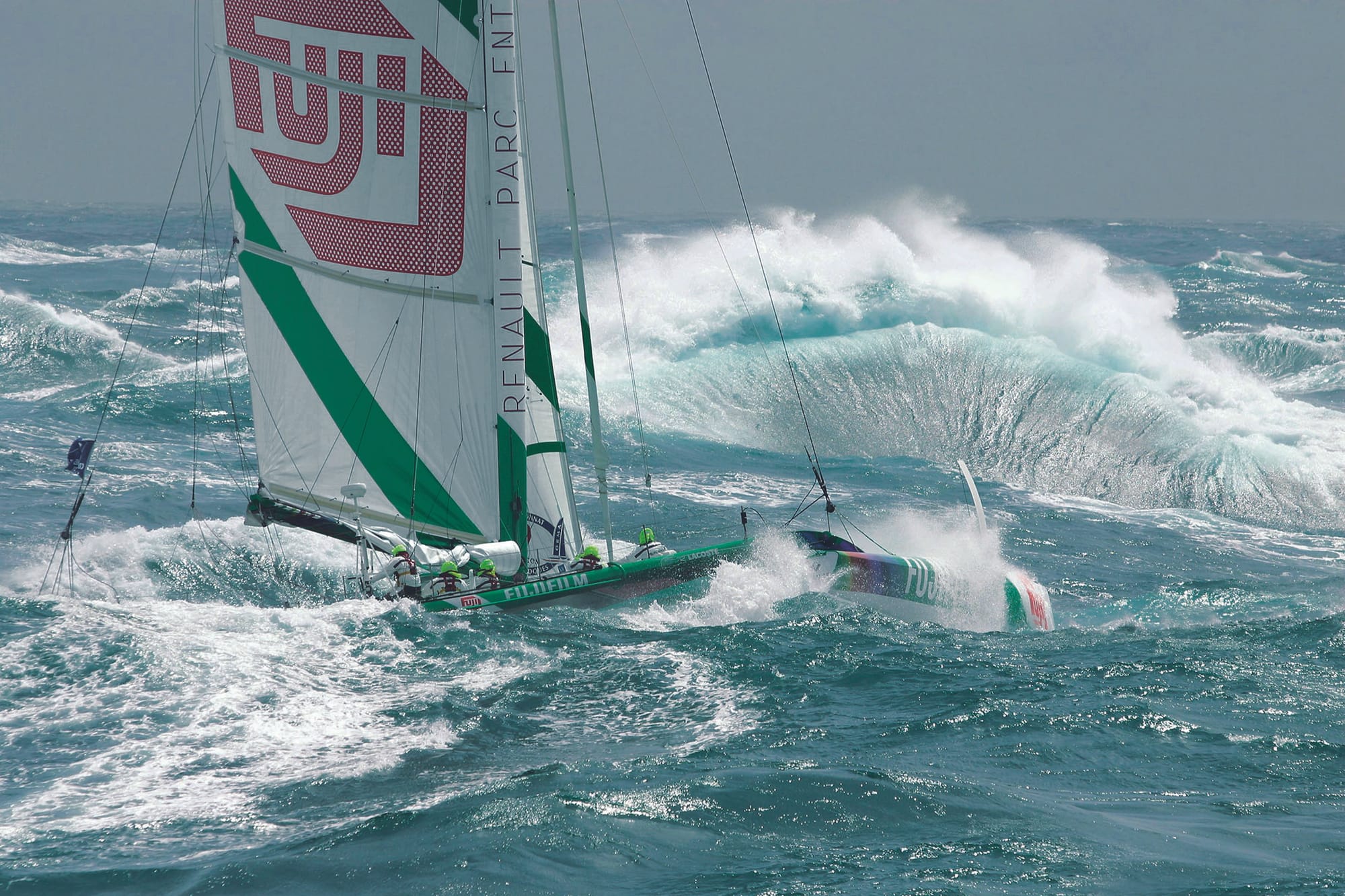
This archive photo from 2002 won the ‘Photo of the Century Award' in 2020 (the year of the Covid when nobody was able to take a racing photo). Although many sailing fans know it already, I could not leave it out of this selection. It was taken in 2002 during the Round the Lighthouse Race for ORMA 60 trimarans – the fastest offshore boats in the world at that time.
Skippered by the legendary Loïck Peyron the boat was sailing in a very shallow channel of water at the west tip of Brittany between Ushant and the Sein Islands. It’s a very spectacular stretch of water when the tide is running against the North Atlantic swell creating large pyramidal waves like the one the trimaran looks like it is about to encounter.


